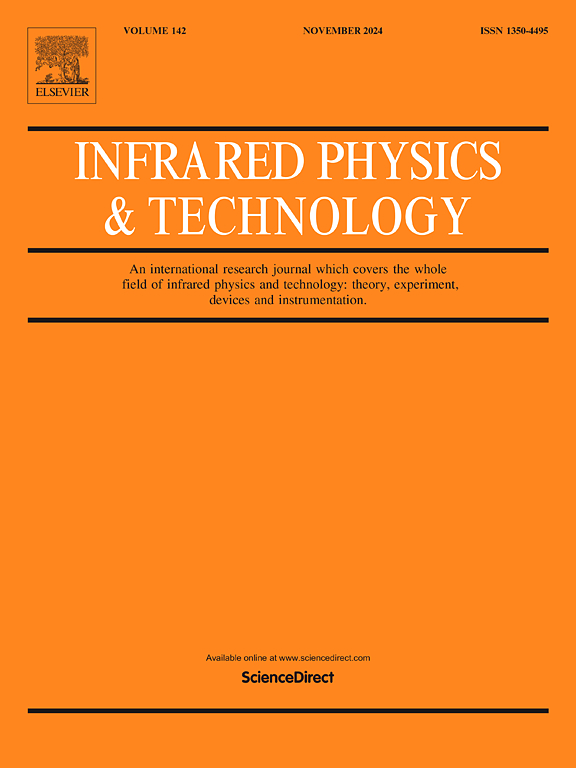Segment anything model edge prior-guided infrared and visible image fusion method
IF 3.4
3区 物理与天体物理
Q2 INSTRUMENTS & INSTRUMENTATION
引用次数: 0
Abstract
Hindered by the low robustness of visible imaging and the low resolution of infrared imaging, visible and infrared images captured in real scenarios often suffer from severe detail loss and indistinct edge appearance. Therefore, modeling of fine-grained edges is crucial for high-quality fused image generation. However, recent deep learning-based fusion algorithms have limitations in exploring highly robust structural priors, in other words, limited edge perception ability, resulting in edge artifacts and low clarity. To address the aforementioned issues, we propose a novel fusion framework guided by segment anything model (SAM) edge priors. SAM boasts outstanding zero-shot generalization capabilities, enabling it to extract high-quality edge priors from target scenes even under unideal imaging conditions, such as low-light and dense noise. We propose an image content-edge fusion block (CEFB), which progressively injects edge information from the source images into the image content features, to enhance their edge representation ability. Additionally, considering the significance of inter-modality interaction, we also introduced an image translation network, achieving mutual translation between infrared and visible modalities. Then, the SAM edge priors extracted from the transformed images, which have unchanged content but altered style, are utilized and embedded into the content features after modality interaction through the proposed CEFB, thus strengthening the representation of modality-invariant edge structures. Extensive experiments on two public datasets demonstrate our method generates fused images with more distinct edges and enhanced target information, and also exhibits strong generalization capabilities across diverse scenarios.
分割任意模型边缘的先验制导红外与可见光图像融合方法
受可见光成像鲁棒性较低和红外成像分辨率较低的影响,实际场景中拍摄的可见光和红外图像往往存在严重的细节丢失和边缘模糊问题。因此,精细边缘的建模对于生成高质量的融合图像至关重要。然而,目前基于深度学习的融合算法在探索高度鲁棒的结构先验方面存在局限性,即边缘感知能力有限,导致边缘伪像和清晰度低。为了解决上述问题,我们提出了一种新的基于分段任意模型(SAM)边缘先验的融合框架。SAM具有出色的零点泛化能力,即使在低光照和密集噪声等不理想的成像条件下,也能从目标场景中提取高质量的边缘先验。我们提出了一种图像内容-边缘融合块(CEFB),它将源图像的边缘信息逐步注入到图像内容特征中,以增强图像内容特征的边缘表示能力。此外,考虑到多模态交互的重要性,我们还引入了图像翻译网络,实现了红外和可见光模态之间的相互翻译。然后,利用变换后的图像中提取的内容不变但样式改变的SAM边缘先验,通过CEFB进行模态交互后嵌入到内容特征中,从而增强了模态不变边缘结构的表示。在两个公共数据集上的大量实验表明,我们的方法生成的融合图像具有更清晰的边缘和增强的目标信息,并且在不同场景下也显示出强大的泛化能力。
本文章由计算机程序翻译,如有差异,请以英文原文为准。
求助全文
约1分钟内获得全文
求助全文
来源期刊
CiteScore
5.70
自引率
12.10%
发文量
400
审稿时长
67 days
期刊介绍:
The Journal covers the entire field of infrared physics and technology: theory, experiment, application, devices and instrumentation. Infrared'' is defined as covering the near, mid and far infrared (terahertz) regions from 0.75um (750nm) to 1mm (300GHz.) Submissions in the 300GHz to 100GHz region may be accepted at the editors discretion if their content is relevant to shorter wavelengths. Submissions must be primarily concerned with and directly relevant to this spectral region.
Its core topics can be summarized as the generation, propagation and detection, of infrared radiation; the associated optics, materials and devices; and its use in all fields of science, industry, engineering and medicine.
Infrared techniques occur in many different fields, notably spectroscopy and interferometry; material characterization and processing; atmospheric physics, astronomy and space research. Scientific aspects include lasers, quantum optics, quantum electronics, image processing and semiconductor physics. Some important applications are medical diagnostics and treatment, industrial inspection and environmental monitoring.

 求助内容:
求助内容: 应助结果提醒方式:
应助结果提醒方式:


